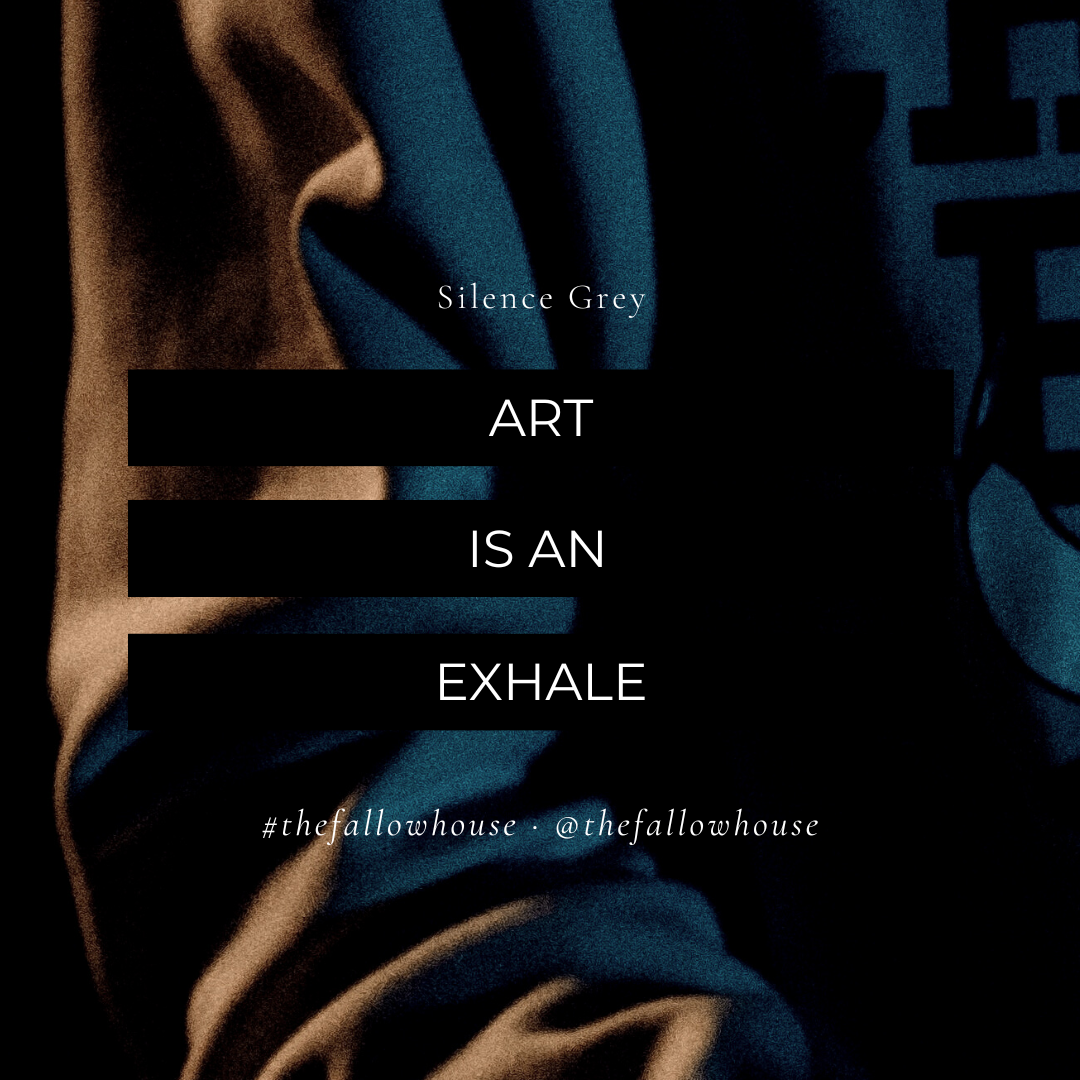Speaking The Tongueless Language
Shadows stain my hands like the charcoal gripped tight between two fingers and a thumb. Smears of gray down my forearms, smudged thumbprints under my eyes and freckling my nose. My relationship with art has always been messy.
It started with doodling in hospital waiting rooms, rehearsal dressing rooms, the backseat of the car. Single-dollar watercolor sets purchased from the local Walmart splattered my walls with every color of a too-bright rainbow. Sharpie ink sank into my skin with toxic hues of pitch black and childhood rebellion. Then charcoal fell into my hands with all the unexpected weight of adulthood.
By age fourteen, pictures of horses and sunrises were replaced by the twilight obscurity of charcoaled bones, reaching hands, and blocked-up throats. That smudgy, contagious mess was a kind of therapy. Dropping the stub of burnt wood, swiping my hand across paper or haphazardly slashing through that palpable darkness with a soft white tortillon, it cleansed me somehow. More than any other medium, the chaos of charcoal resonated with the cacophony of my own heart.
Nursing passions for writing, music, drawing, and dance, I learned early on that I was not a natural speaker. Speech 101 was traumatizing when compared to Advanced Trigonometry (and I hate math), and as someone who performed on an amphitheater stage from age five, it was not because I was shy. My tongue has always felt tangled, stumbling over feelings, spouting lies when the truth felt too thick, unable to make sense of myself or anything else for that matter.
But what used to be an insecurity and a reason to retreat has since transformed into the deepest of blessings. A realization of a different kind of language. A song without the tongue. The stroke of a brush, the sounding of Middle C, the stretching of a dancer’s arm. The language of the soul rather than the intellect. A flourishing world of light and dark, flowers and shadows, abundant green and dustbowl deserts—the dichotomy of human nature.
The first chapters of Genesis have long been a Biblical staple in the art world. God created, so we create. Something often overlooked, however, is the nature of each creation. God said, “Let there be light,” and there was light (Gen 1:3). Each day is postmarked by speech. But His greatest work was not spoken into being. In fact, the creation of our first father and mother carries almost a solemn kind of joy. The Creator of this wide world and grandiose universe stooped to take up dust and hand-fashion that which He knew would break His heart. He breathed life, not spoke it (Gen 2:7-8).
Art is an exhale. The complexity of the human soul outstretches the limitations of finite speech. When I first met that silver-tongued monster called Depression, I could not articulate my pain to find relief. Trapped inside myself, my hands took over for broken lungs and exhaled onto a paper, drenched in paint like the pain coating my ribs, caked with charcoal like the dust packed in my throat. Where there was death and darkness, my hands learned a new language—a language not of words, but of fire and holy blood and love beyond articulation.
The shadows smudging my palms are adjectives to a testimony still in the making. Those watercolor mountains on my wall glow with the sunrise hues of forgiveness I never had the chance to speak. The little boy with a balloon—colored pencils on the back of a notecard—ministers to me with childlike faith. Where the fire of the tongue has burned out, the wellspring of a thirsty soul springs up. Art as a form of worship brings the sweetest fruit to the lowest of valleys, nourishing the tilled fields of a life lived deeply.
My sketchbook is silent. And yet, nothing has ever been louder.
HOW DO THESE WORDS RESONATE WITH YOU?
TELL US IN THE COMMENTS.
SILENCE MAGDALENE GREY is a writer, poet, and artist heralding from a little bit of everywhere. She loves deep forests, honest words, life's simple beauties, and the intricate study of what it means to be human. Living in the tension between school and art, she is currently chipping away at a full-length manuscript. Follow her journey on Instagram at @her.ink.is.grey or through her Substack, themagdalenearchive.substack.com.

